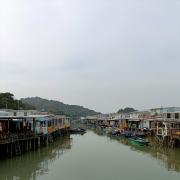
Our world is in the brink of a global phenomenon: climate change and part of the issue is how we power the UK and all its homes, businesses and industries. Scientists are looking for alternative energy sources to control greenhouse gas emissions while also providing everybody with the same level of energy as fossil fuels. The Paris Agreement in 2016 forced a vow from several countries to reduce carbon emissions to zero by 2030. While it doesn’t look as likely, there is one place in the UK that produces almost zero carbon emissions, and extremely close to reaching point zero. This is the story of Dungeness.
Residing in the UK’s south-east coast, in Kent lies a small town called Dungeness. Nobody would expect that a land with only sand and shingle around it would thrive to set examples for the rest of the world to follow, but they are pioneers in green energy sources. Around the world, there are roughly 450 nuclear reactors, a large mass of it in the USA, but European countries like France and Russia as well as Asian countries such as India and China have a good share of them. The UK is home to 7 nuclear power stations with 15 operating reactors. One of these stations is the Dungeness B power station. The story of Dungeness begins in 1966 when Newcastle born Charles Parsons took his drawing board and pen to sketch out a plan for a power station. In a time when there were no computers, no Google, no calculators and not a lot of knowledge of atomic structures, Parsons drew everything to perfection. The diameter of the turbines, the height of the reactors, the length of the control rods and the amount of energy produced was calculated on pen and paper by Parson and his team. Little did they know that they would be drawing something that would be the solution to a global crisis sixty years later.
Construction began in 1966, but the first reactor was only operational in 1983, the second was born two years later. This late start meant that the life expectancy for Dungeness would last another few years in comparison to other plants because the graphite on the moderators was unused for twenty years. After the accidents at Chernobyl and Fukushima, the ONR (Office of Nuclear Regulation) tightened its control on all nuclear plants to prevent anything similar in the future. Similar to Ofsted (a body that assesses the qualities of schools around the UK), the ONR conduct checks to ensure that the reactors are operational since all nuclear reactors have a set life expectancy. The ONR concluded that the Dungeness B reactors would last until 2008, the next check suggested 2018. The reactors are still operational in 2020, however, the ONR has concluded that these reactors will stop working in 2028. Several other nuclear reactors around the UK will shut in 2028. However, Dungeness is keen to stay for long, they want to be the first in the UK and the last as well. Refurbishments are being made in Dungeness after an investment of roughly £5 million and everything will be updated to make sure it fits the regulations of the ONR and potentially last into 2030. Hence, if anyone were to visit now, they would find the reactors idle.
Dungeness is home to two nuclear reactors and a huge wind farm also has a rich array of flora and fauna. While Dungeness classifies as an SSSI (Site of Specific Scientific Interest), it also classifies as an NNR (National Nature Reserve). It is home to two very special species: the emerald moth and yellow horned poppy and firms like EDF Energy (the owners of Dungeness) also take responsibility to preserve these species. This is what makes Dungeness so special; a rare place where science and nature are in harmony.
The main problem that Dungeness faces is its expiry date of 2028. This would mean a lot of loss of jobs in Dungeness. Attia, a tour guide in Dungeness, described how a lot of her family, her grandfather, father and brother, worked in these reactors as engineers. She was deeply saddened by the fact that such an important place in her family and heart would be shut forever. The employees are also incredibly well taken care of, they are regularly checked for the radiation they absorb, protecting them from irradiation. However, with the construction of Hinkley Point C, a new nuclear station aiming to produce three times the energy Dungeness produces, Attia and a lot of her colleagues hope that the job loss wouldn’t be too significant. All nuclear reactors produce 3% nuclear waste, but even this seemingly insignificant amount could be deadly. Dungeness is in search of another genius like Parsons to discover a use for this waste, to nullify this small debt they owe to the environment. They are also keen to see more females in this industry, so they started their program named Pretty Curious to encourage more females to explore their opportunities in nuclear engineering, a field that is so significant in this modern era.
Dungeness has a story that should be told to everyone, from a drawing board to a place thriving with so much scientific interest. One in every five lights in the UK is powered by them. It is so easy to turn off and turn on a switch, but we never actually think about the source of this electricity. The work that goes behind it, to produce light for us to work, cook and study, cannot be imagined by any single one of us. They are exposed to tonnes of radiation every day and we will always be indebted to Dungeness. Their story and history will never be forgotten for years to come.
by Rathi Ramakrishnan, Nower Hill High School



























